
Taiping Bridge in Xichou County, Wenshan
Chinese Name:西畴县牛羊太平桥
English Name:Niuyang Taiping Bridge in Xichou County, Wenshan
Niu Yang Taiping Bridge, located in Xingjie Village, Laojie Village, Xichou County, Wenshan Zhuang and Miao Autonomous Prefecture, Yunnan Province, spans the Chouyang River. It was built in the 13th year of Emperor Qianlong of the Qing Dynasty (1748) and has been continuously maintained and repaired since then. The bridge features a sophisticated wooden beam covered gallery structure, showcasing unique craftsmanship. It is renowned as one of the finest examples of Zhuang-style covered bridges over the Chouyang River and stands as an important ancient bridge in Yunnan Province.
Location:
The Niuyang Taiping Bridge is located on the eastern side of Laojie Village in Xingjie Town, Xichou County, Wenshan Zhuang and Miao Autonomous Prefecture, Yunnan Province, spanning the Chouyang River.
History:
The bridge was originally constructed in the 13th year of the Qianlong Emperor’s reign during the Qing Dynasty (1748). Over the years, it has undergone several repairs and reinforcements, but it remains in use to this day. The bridge is a wooden beam-covered corridor bridge, known for its intricate design and craftsmanship, making it the most significant wind and rain bridge along the Chouyang River and one of the most important ancient bridges in Yunnan.
Design:
- Dimensions: The bridge is 34.2 meters long, 3 meters wide, and 6 meters high. It is a flat bridge with four stone piers supporting the structure.
- Architecture: The bridge features a tiled roof wooden corridor with nine compartments and ten rows, supported by a cross-beam frame. Both ends of the bridge have fortress-like entrances. Inside the eastern entrance, five stone tablets document the history of the bridge’s construction, including its original build, renovations during the Xianfeng era, and additional repairs in the third year of the Xuantong Emperor’s reign. One inscription highlights the bridge’s strategic importance, stating that it was a vital route connecting the north and south, as well as a thoroughfare to the northeast.
Cultural Significance:
The Niuyang Taiping Bridge is a prime example of Zhuang ethnic architecture, renowned for its grand scale and sophisticated design. It serves as a vibrant community hub where people gather during the day to rest, embroider, or fish, and in the evening, it becomes a place where elders recount stories and young people engage in singing contests.
Legend:
The bridge’s name is tied to a local legend involving a bee king that terrorized the area by devouring livestock and children. The villagers sought help from the deity Zhou Meng, who burned the bee king alive with a mix of dry chili powder and hay at its cave entrance. The river was named Niuyang River after the livestock, and the bridge was named Niuyang Taiping Bridge in honor of the river. The river was later renamed Chouyang River in the late Qing Dynasty.
Scenic Beauty:
The bridge is likened to a rainbow on earth, embodying historical changes and cultural richness. Standing on the ancient bridge offers breathtaking views of lush peaks, vast rice fields, and sparkling waters below, evoking a sense of tranquility and exhilaration that leaves visitors deeply enchanted.
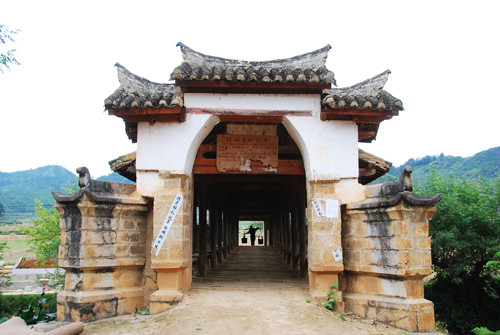
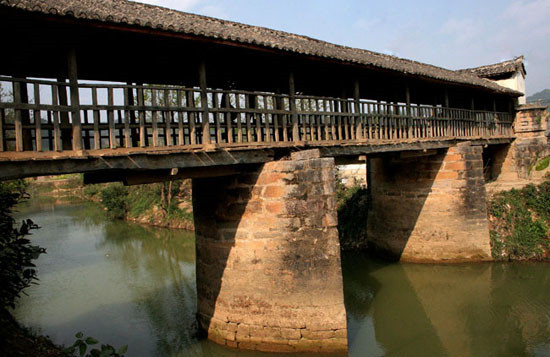
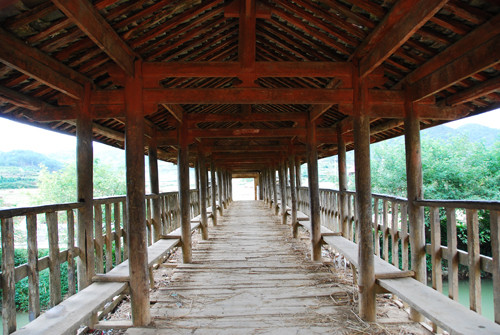
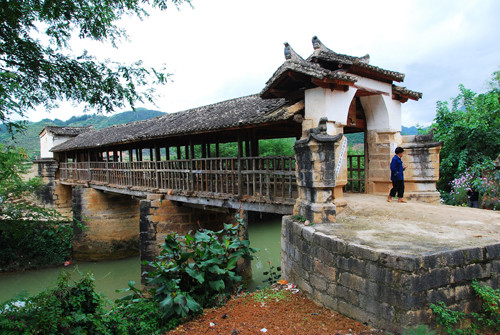

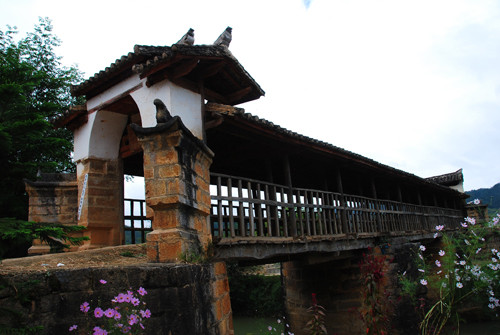

 7 Days GolfingTour
7 Days GolfingTour
 8 Days Group Tour
8 Days Group Tour
 8 Days Yunnan Tour
8 Days Yunnan Tour
 7 Days Shangri La Hiking
7 Days Shangri La Hiking
 11 Days Yunnan Tour
11 Days Yunnan Tour
 6 Days Yuanyang Terraces
6 Days Yuanyang Terraces
 11 Days Yunnan Tour
11 Days Yunnan Tour
 8 Days South Yunnan
8 Days South Yunnan
 7 Days Tea Tour
7 Days Tea Tour
 8 Days Muslim Tour
8 Days Muslim Tour
 12 Days Self-Driving
12 Days Self-Driving
 4 Days Haba Climbing
4 Days Haba Climbing
 Tiger Leaping Gorge
Tiger Leaping Gorge
 Stone Forest
Stone Forest
 Yunnan-Tibet
Yunnan-Tibet
 Hani Rice Terraces
Hani Rice Terraces
 Kunming
Kunming
 Lijiang
Lijiang
 Shangri-la
Shangri-la
 Dali
Dali
 XishuangBanna
XishuangBanna
 Honghe
Honghe
 Kunming
Kunming
 Lijiang
Lijiang
 Shangri-la
Shangri-la
 Yuanyang Rice Terraces
Yuanyang Rice Terraces
 Nujiang
Nujiang
 XishuangBanna
XishuangBanna
 Spring City Golf
Spring City Golf
 Snow Mountain Golf
Snow Mountain Golf
 Stone Mountain Golf
Stone Mountain Golf














